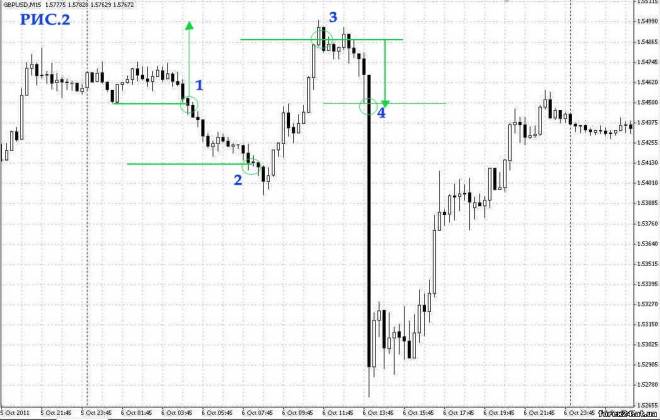|
Statistics
Total online: 1 Guests: 1 Users: 0
|
Trade
Locking in Forex
Locking in Forex technique is not common, but there are still some proponents of this method of trading, and therefore, it is necessary to consider this element of the trading system. [Here Advisor-lokas] I have to Say that locking it is better not to use on real accounts traders who do not have sufficient experience in the trade. Using this method is considered risky, even by the standards of the already high risk of Forex. To make it easier to understand what a lock, will consider trade example.
Let us open the deal to buy the pair with a volume of one lot. The situation turned in such a way that the market goes against an open position. At a certain point for a trader it becomes clear that this deal is flawed, and he wants it to close with a loss. When working with Stop Loss orders fixed the loss, but trader instead opens up another sale transaction for the same currency pair, but in the opposite direction.
Thus, the score is now two deals of the same size but open in different directions. Wherever the price either balance or funds on Deposit will not change, because operations would overlap. In this case we say that the loss salacious or what the deal was delivered Locke.
This action is done in order to wait for the moment of price reversal. When a trader sees that the possible price reversal in the opposite direction, it closes a profitable trade. In this case we say that the trader opened a "lock". Lock just call the situation where the account is Locke. The erection of the castle is quite a difficult task because you need to correctly determine the point of reversal. If that does not succeed, it will have to be put back lockeroom position.
When profit is fixed for the transaction, the Deposit hangs the second deal with the loss. The trader waits for the price to unfold and it will be some distance from the open price of the transaction. Thus, you can not expect that the position will come out of the loss, and just minimize it, close the deal. The result is that when summing the results of these two transactions, the account will get a positive number, then there is profit.
In the example we used two trades with the same volume. Yet there is partial locking when locking the transaction is not equal to the volume of the first position. For example, if a trader made a deal to buy 1 lot, then in case of unfavorable development of events, he may sell the same currency pair a volume of 0.7 of the lot.
Such techniques to better hone in on a demo account, because lost in the "lokah" can greatly harm the trading account. Equally important is the ability of the speculator to open the locks "lock". It happens that before you decide to close the position the trader must exhibit five or more castles, alternately opening the previous lock, installing the following.
The locking position vs Stop Loss
A debate between those traders who use to trade the Stop Loss and Loki does not stop until now. Each defends his point of view, to convince opponents that their trading method is less effective. Let's look at an example of the same situation using the first lock, and then stops. In the examples taken for ease of decision making through 40 points.
In Fig.1 we see that the trader has open orders for the purchase at the point 1. The price began to fall, and, after 40 points, the speculator realizes that he was wrong. In point 2 he puts lockeroom position. Price ranges for some time when it reaches level 3 (40 points from level 1), then the trader decides to open the lock, closed the purchase with a profit. The price reversal happens, and waiting, when the price reaches level 4 (level 3 – 40 points), hedge trade closes with a loss. The sum of the results of the two agreements is zero.The decision of trader was taken at point 1 on the opening of the purchase, in point 2, the understanding of losing input on the locking of a transaction at point 3 that a probable price reversal in point 4 on closing of the second transaction.

Now consider the same example, but without locking and using a Stop Loss. Similarly, at point 1 opens a deal to buy at point 2, the trader realizes that he was wrong, but instead of issuing "loca" captures the loss. When the price reaches level 3, the speculator assumes that a reversal of price and therefore sells. At 4 the decision on closing of the transaction, as in the first example. As a result, both deals add up to zero.

From the above examples it follows that the locking is only some replacement trade using Stop Loss. In fact, this trade similar to the trade with feet. The difference is probably only in the psychological factor. You may receive an objection from the traders that use the "Loki". After all, in the castle they can sit for a long time, until the most clear situation. Immediately rush to argue that the speculator who trades with stops, there is all this time out of the market, and when it comes to a probable time, he'll just open a transaction, as in Fig.2 at point 3.
|
| Category: Forex | Added by: (30.10.2017)
|
| Views: 381
| Rating: 0.0/0 |
|